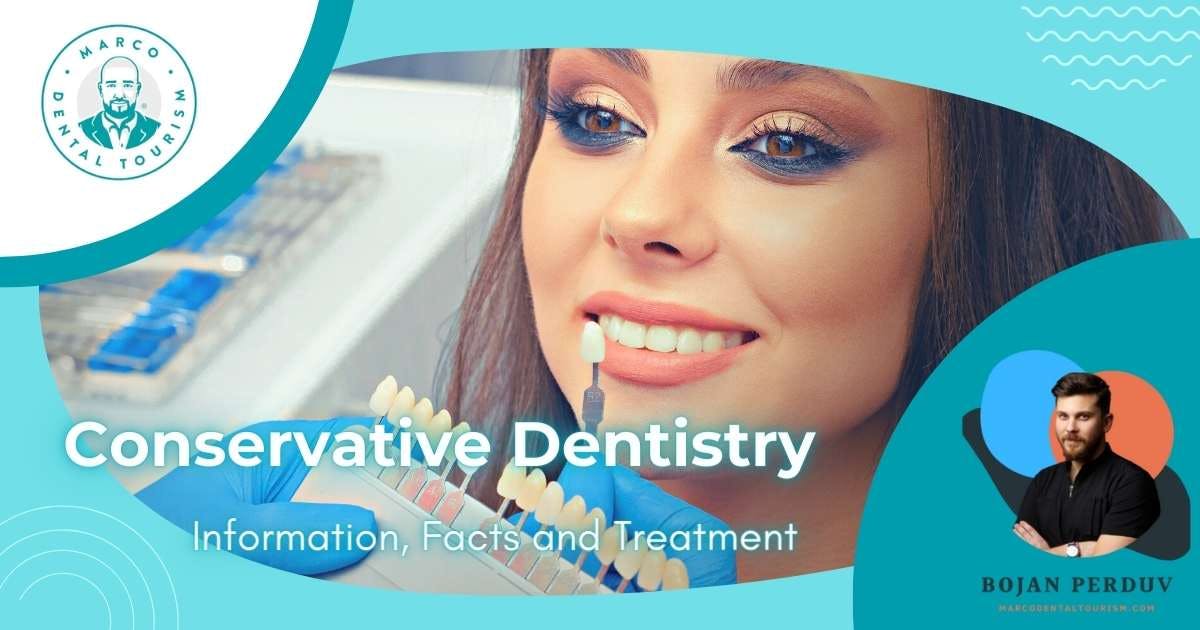
Have you ever imagined how to keep your teeth completely healthy and strong, while avoiding painful and invasive treatments such as tooth extraction or surgery? If you are looking for effective dental care that can reduce the risk of formation dental caries and other problems, conservative dentistry can be one of the most desirable solutions. In this blog, we discuss the role of preventive care, the benefits of conservative treatments, and the different types of procedures available. By the end of the text, you will have a better understanding of conservative dentistry, as well as the ways in which it can help keep our teeth and gums functional throughout our lives.
What is conservative dentistry and what does it do?

Conservative dentistry is the practice of preserving the natural structure of the teeth while simultaneously achieving optimal oral health. It is a proactive approach to dental care that focuses on prevention, early diagnosis and intervention of dental diseases with a tendency to avoid invasive treatments.
Conservative dentistry treats teeth with minimally painful treatments. The most common treatments include:
Dental fillings: Dental fillings are used to restore teeth damaged by caries, certain diseases of the mouth and gums or some mechanical injury, or trauma. Filling materials have advanced significantly, so traditional amalgam has been replaced by more aesthetically and functionally acceptable materials such as composite resin.
Bonding: The bonding method is used to repair chips, gaps or defects and discoloration of teeth. Composite resin is applied to the affected area and then shaped and polished.
Crowns: Covers for teeth or crowns they are used to cover a damaged tooth, while the substitute materials from which the crowns are made provide strength and protect the teeth from further diseases. The crown is placed over the rest of the tooth and is usually made of porcelain or metal.
Dental veneers: Veneers or veneers for teeth are thin porcelain shells that are used to restore the shape and color of the teeth and thus correct visible and easily accessible defects on the teeth.
Root Canal Therapy: Root canal therapy is a treatment used to save a tooth by removing infected nerve tissue from inside the tooth and restoring the tooth with an adequate filling material. It helps to preserve the tooth structure and prevent further damage to the surrounding teeth. It is a conservative dental procedure that provides relief from toothache and restores the natural appearance of the teeth.
How is conservative dentistry divided?

Conservative dentistry is divided into two branches: operative dentistry and endodontics. Operative dentistry involves the restoration or repair of teeth, while endodontics refers to pulp health and root canal treatment. Both are necessary for the preservation of natural teeth and general oral health.
What is dental restoration and what does the restoration process look like?

Tooth restoration is the process of restoring the function of a damaged tooth. Restorative dentistry uses techniques such as fillings, crowns and dental bridges without removing healthy tooth structure. The process involves removing cavities, cleaning, shaping the teeth and replacing the missing structure with a custom-made filling.
Is the tooth restoration procedure painful?

Fortunately, the tooth restoration process in conservative dentistry is not painful! During the treatment, the dentist will use a local anesthetic to numb the area before removing the caries, which will make the process more comfortable and painless. The tooth is then cleaned, filled and polished in accordance with the existing color of the tooth.
What does the dental endodontic process look like and why is it important?

Endodontic treatment involves removing the inflamed or infected pulp, cleaning and shaping the inside of the tooth, and finally filling the root canal with a special medical material. This is important in order to save the tooth from extraction while relieving pain and infection.
Which dental procedures fall under conservative dentistry?

In addition to standard treatments such as fillings or root canal therapy, conservative dentistry has been perfected in many other complex dental treatment processes such as:
Inlay/Onlay Fillings: Onlays are used to restore teeth when the damage to the teeth is too great for filling. The onlay filling is made to measure, and is made of porcelain or gold and is cemented to the required tooth or to several of them.
Fluoride treatments: These dental treatments strengthen tooth enamel, protecting against the appearance tartar on the teeth, demineralization and help prevent caries.
Teeth whitening: Bleaching is a common procedure in conservative dentistry that includes a safe, non-invasive way to whiten and improve the appearance of a smile without damaging the existing tooth structure using hydrogen peroxide in a gel.
What is the difference between conservative and operative dentistry?
Conservative dentistry is aimed at preserving existing dental structures, while operative dentistry is aimed at restoring damaged teeth or replacing missing teeth. Both dental specialties provide vital treatments to maintain oral health.
What does preventive dentistry mean?

Preventive dentistry is oral care that focuses on prevention dental problems. It includes regular brushing and flossing, dental examinations and application of fluoride treatment with the aim of strengthening tooth enamel, as well as early detection and treatment of all potential patient complaints.
How to prevent dental caries with conservative dentistry?

Good hygiene is essential to prevent tooth decay, and conservative dentistry offers some great tips for daily dental care. Here are some effective and reliable care methods:
Brush your teeth twice a day with fluoride toothpaste: Fluoride helps strengthen tooth enamel, making it more resistant to diseases like tooth decay.
Limit your sugar intake: Sugar feeds the bacteria that cause it candida in the mouth, as well as the formation of caries.
Use antibacterial mouthwash: Mouthwash helps reduce bad breath by keeping your mouth clean and fresh.
Wear a mouthguard: Wearing a mouthguard helps protect your teeth from injury caused bygnashing of teeth or by pressing the fork.
Conclusion

Conservative dentistry is the cornerstone of modern dentistry and can be an invaluable tool in protecting and preserving the natural tooth structure. Although it dates back to ancient times, this field of dentistry has seen its greatest progress in the last few decades using different methods to ensure successful treatment and patient satisfaction. We talked about the importance of conservative dentistry, possible procedures, progress and advantages that it inevitably brings. It is up to you to adhere to healthy dental habits and regular visits to the dentist for preventive care, which together can make your teeth more resistant, and carefree and long-lasting enjoyment guaranteed.















Share your opinion!
What do you think about this topic?
Comments (0)